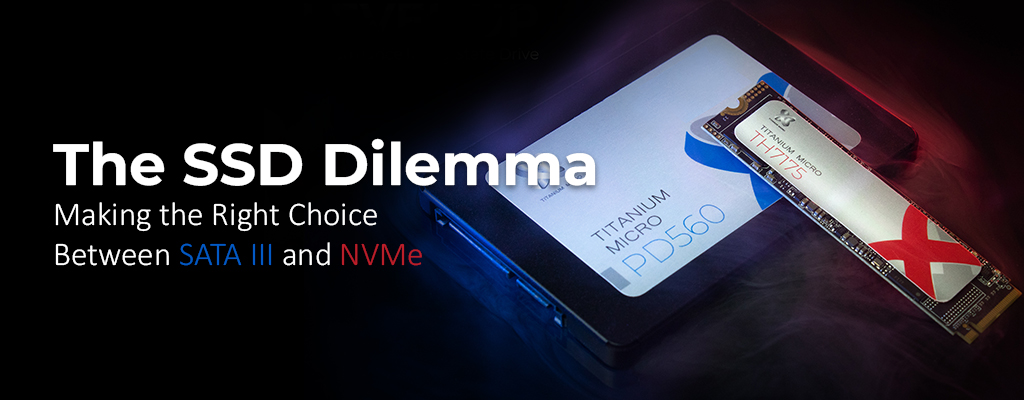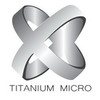"The SSD Dilemma: Making the Right Choice Between SATA3 and NVMe"
Author by TITANIUMMICRO on May 6th 2024

In the realm of storage solutions, Solid-State Drives (SSDs) have revolutionized how we perceive and utilize data storage. With their blazing-fast speeds and enhanced reliability compared to traditional Hard Disk Drives (HDDs), SSDs have become the go-to choice for individuals and businesses alike. However, within the realm of SSDs, a dilemma often arises: choosing between SATA III and NVMe interfaces. Let's delve into this dilemma and explore how to make the right choice based on your needs.
Understanding SATA III and NVMe
First, let's understand what SATA III and NVMe are:
SATA III (Serial ATA III): SATA III is an interface standard for connecting storage devices like SSDs and HDDs to a computer's motherboard. It has been around for a while and offers decent speeds, with theoretical maximum speeds of up to 6 Gigabits per second (Gbps). However, due to various overheads and limitations, real-world speeds are typically lower.
NVMe (Non-Volatile Memory Express): NVMe, on the other hand, is a newer and more advanced interface designed specifically for SSDs. It leverages the PCIe (Peripheral Component Interconnect Express) interface, which is significantly faster than SATA III. NVMe SSDs can achieve much higher speeds and lower latency compared to SATA III SSDs.

When it comes to performance, NVMe SSDs have a clear edge over SATA III SSDs. NVMe drives can deliver sequential read and write speeds of several Gigabytes per second (GB/s), whereas SATA III drives typically max out around 500-600 Megabytes per second (MB/s) due to interface limitations.

One factor that often influences decision-making is price. Historically, NVMe SSDs have been more expensive than their SATA III counterparts. However, as technology has advanced and production costs have decreased, the price gap has narrowed significantly.
Today, you can find NVMe SSDs that offer excellent performance at competitive prices, making them a viable option for a wide range of users. However, if budget constraints are a significant consideration, SATA III SSDs still offer solid performance at a more affordable price point.

To make the right choice between SATA III and NVMe, consider your specific use case scenarios:
Casual Users: For everyday tasks like web browsing, document editing, and multimedia consumption, a SATA III SSD provides more than enough speed and responsiveness. It offers a significant upgrade over HDDs and ensures a snappy computing experience.
Content Creators and Gamers: If you work with large media files, engage in content creation (video editing, graphic design, etc.), or are a passionate gamer, NVMe SSDs are highly recommended. They significantly reduce loading times, improve file transfer speeds, and enhance overall system responsiveness, enhancing your productivity and gaming experience.
Whichever option you choose, upgrading to an SSD from a traditional HDD is a game-changer in terms of speed, reliability, and overall computing experience. Evaluate your requirements carefully, weigh the pros and cons, and make an informed decision to get the most out of your storage solution.
